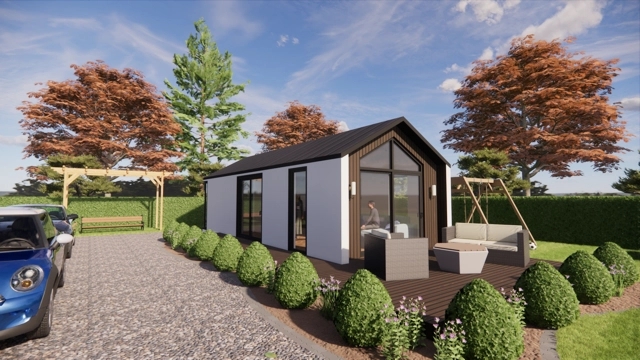Is the Modular House Revolution the Future of Affordable Living?
The UK housing market is embracing modular houses as a game-changer, offering stylish, sustainable, and budget-friendly homes. With rising property prices and a growing demand for eco-conscious living, these prefabricated homes are gaining traction. Faster construction, lower costs, and modern designs make modular houses an appealing choice for first-time buyers, downsizers, and families alike.
Why Modular Houses Are Gaining Popularity
Affordability is a key driver behind the surge in modular house demand. In 2025, the average UK home costs over £300,000, while a modular house can be up to 20% cheaper, thanks to efficient factory production and reduced labour expenses. Unlike traditional builds, modular houses avoid weather delays, ensuring quicker completion—often in just 12-16 weeks.
Modern aesthetics also play a role. Gone are the days of bland, boxy designs; today’s modular houses feature sleek, customisable layouts, from urban studios to spacious family homes. With options for open-plan living, high-end finishes, and smart storage, these homes cater to diverse tastes without compromising on style.
Key Trends Shaping the Modular House Market
Single-storey modular houses are rising in popularity, particularly among retirees and young families seeking accessible living. Energy efficiency is another major trend, with many modular houses including solar panels, superior insulation, and heat pumps—cutting energy bills by up to 40%. The UK government’s Green Homes Grant 2025 further incentivises buyers, offering up to £5,000 towards eco-friendly upgrades.
Smart technology is becoming standard, with many modular houses pre-fitted with automated heating, security systems, and energy monitors. These features align with the growing demand for homes that are both sustainable and tech-savvy.
Cost Savings and Long-Term Value
Modular houses not only save money upfront but also reduce long-term expenses. A typical three-bedroom modular house costs between £120,000-£180,000, compared to £250,000+ for a traditional build. Lower maintenance costs—thanks to durable materials and precision engineering—add to the appeal.
Government schemes like Help to Buy: Modular Home Edition (launched in 2024) provide additional support, allowing buyers to purchase with just a 5% deposit. Combined with reduced utility bills, modular houses offer a financially savvy route to homeownership.
The Future of Modular Houses in the UK
The modular house market is set for exponential growth, driven by affordability, sustainability, and innovation. As demand rises, expect even more advanced designs, such as carbon-neutral modular houses and AI-integrated smart homes. Traditional builders may need to adapt, incorporating modular techniques to stay competitive.
In summary, modular houses are transforming UK housing, offering a faster, greener, and more economical alternative. With government backing and evolving technology, they’re not just a trend—they’re the future. Could your next home be a modular house?
